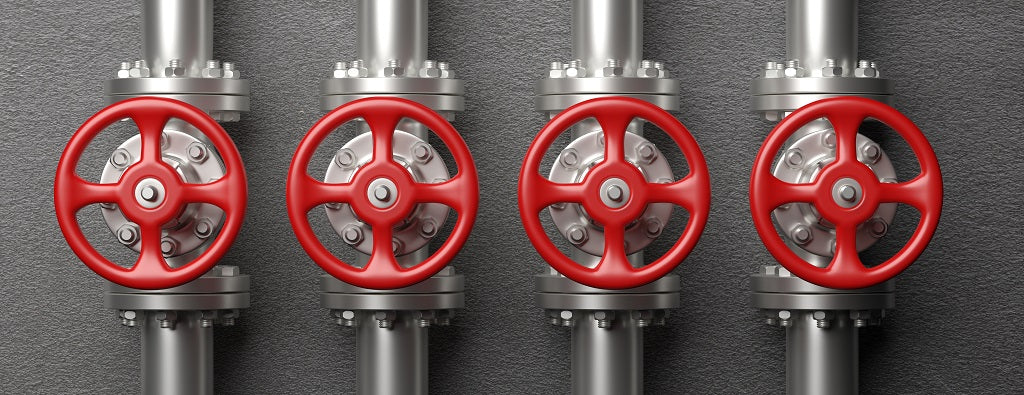Picking the Right Control Valves: A Guide to Optimal System Efficiency
Picking the Right Control Valves: A Guide to Optimal System Efficiency
Blog Article
Achieve Seamless Assimilation and Control With High Quality Structure Automation Controls
In the world of contemporary building monitoring, the relevance of quality building automation controls can not be overstated. Welcoming high quality building automation controls is not simply a matter of benefit however a tactical important for companies aiming to maximize their centers' efficiency and sustainability.

Development of Structure Automation Controls
Throughout the previous couple of decades, the evolution of building automation controls has dramatically changed the way buildings are handled and operated. Initially, constructing automation systems mainly concentrated on basic functions such as controlling air flow, heating, and air conditioning (HVAC) systems. Nevertheless, as technology progressed, these controls have actually ended up being much more sophisticated, permitting a wider range of building systems to be integrated and handled centrally.
The evolution of developing automation controls has seen a shift towards more smart systems that can adjust to changing problems in real-time. This adaptability is essential for maximizing energy effectiveness and ensuring occupant convenience. Additionally, modern structure automation controls currently supply features such as anticipating upkeep, remote tracking, and information analytics, enabling center supervisors to make data-driven choices to improve structure efficiency.

Advantages of Quality Assimilation
The improvement in structure automation manages in the direction of more intelligent systems has emphasized the considerable advantages of high quality combination in optimizing building operations and enhancing general effectiveness. This centralized control additionally gives better visibility and understandings into structure performance, enabling aggressive upkeep and optimization approaches. In general, the benefits of high quality assimilation in structure automation controls are undeniable, providing boosted performance, convenience, and functional performance.
Improved Individual Experience and Accessibility
Enhancing individual communication with building automation regulates with instinctive layout and improved access raises the total experience for passengers and facility supervisors alike. By focusing on user experience, developing automation systems can become much more straightforward and reliable. Intuitive user interfaces, clear navigation, and adjustable setups empower customers to interact with the controls easily and successfully.
Accessibility attributes play a vital role in guaranteeing that all people, consisting of those with disabilities, can utilize the building automation manages easily. Integrating functions such as voice commands, responsive switches, and color-contrasted display screens can improve ease of access and make the controls much more inclusive.
Moreover, improved customer experience leads to higher customer satisfaction, boosted efficiency, and far better decision-making. Occupants can adjust ecological setups according to their preferences, while center managers can successfully keep an eye on and manage building systems - control valves. In general, prioritizing individual experience and accessibility in building automation manages adds to a more seamless and efficient building setting for all stakeholders involved
Lasting Practices Via Automation

In addition, automation can assist in the combination of renewable power sources such as solar panels or wind generators right into structure procedures. Via automation, buildings can align with modern sustainability goals and contribute to a greener future.
Future Trends in Structure Control Systems
In anticipation of advancing modern technologies and advancing sustainability practices, the trajectory of structure control systems is poised to embrace cutting-edge check this site out options and transformative approaches. One noticeable trend shaping the future of building control systems is the raised combination of Expert system (AI) and machine learning. These technologies allow buildings to adjust in real-time to changing problems, optimizing energy usage and improving convenience for occupants. Furthermore, the Net of Points (IoT) is changing building control systems by linking devices and sensing units to streamline operations and enhance effectiveness.
Another vital pattern is the emphasis on cybersecurity procedures to shield against potential threats to constructing automation systems. As buildings come to be more interconnected, making sure robust cybersecurity methods will certainly be vital to secure delicate information and avoid unapproved access.
Additionally, the shift in the direction of cloud-based systems is obtaining energy, permitting systematized control and remote access to building systems. This assists in easier surveillance, maintenance, and updates, enhancing the general performance and versatility of building control systems. As innovation remains to development, these patterns are anticipated to form the future landscape of building automation controls, driving technology and sustainability in the constructed atmosphere.
Conclusion
In verdict, developing automation controls have actually evolved substantially, offering various advantages such as boosted user experience, access, and lasting practices. Quality integration plays a key role in achieving seamless control and efficient operation of building systems. Future fads in building control systems are likely to concentrate on additional enhancing automation capabilities for improved energy performance and total efficiency. It is necessary for structure proprietors and operators to focus on the fostering of quality structure automation regulates to optimize structure procedures and accomplish long-lasting sustainability goals.
In the realm of modern-day structure monitoring, the importance of quality building automation controls can not be overstated. Generally, the development of structure automation controls proceeds to drive why not try here technology in the structure administration industry, supplying new opportunities for creating smarter and a lot more sustainable structures.
The innovation in structure automation regulates towards even more smart systems has actually underscored the significant advantages of quality integration in internet enhancing structure procedures and enhancing overall efficiency. In general, prioritizing user experience and accessibility in structure automation controls adds to an extra smooth and effective structure setting for all stakeholders involved.
It is vital for building proprietors and drivers to focus on the fostering of high quality building automation controls to maximize structure procedures and accomplish lasting sustainability objectives. - control valves
Report this page